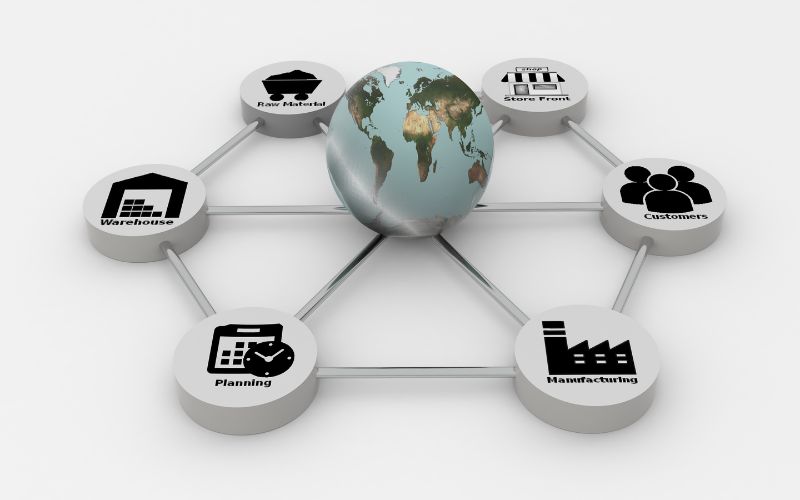

Introduction
In today's interconnected world, fostering intercultural understanding in education has become imperative. This article delves into the significance of promoting cultural diversity and strategies to build bridges between diverse communities within educational settings.
The Role of Intercultural Understanding in Education
Intercultural understanding encompasses the ability to appreciate, respect, and engage with people from diverse cultural backgrounds. In the educational context, it plays a crucial role in promoting tolerance, empathy, and global citizenship. By exposing students to different cultures, traditions, and perspectives, educators can broaden their horizons and equip them with essential skills for navigating an increasingly diverse world.
Challenges in Fostering Intercultural Understanding
Despite its importance, fostering intercultural understanding in education comes with its set of challenges. Cultural biases and stereotypes often hinder genuine dialogue and collaboration between individuals from different backgrounds. Additionally, language barriers and limited exposure to diverse perspectives can further exacerbate misunderstandings and misconceptions.
Strategies for Building Bridges in Education
To address these challenges, educators can implement various strategies to promote intercultural understanding. This includes incorporating a multicultural curriculum that reflects the diversity of students' backgrounds, promoting cultural exchange programs, and encouraging open dialogue and empathy in the classroom.
Technology's Role in Fostering Intercultural Understanding
Technology has emerged as a powerful tool for fostering intercultural understanding in education. Virtual exchange programs allow students to interact with peers from different cultural backgrounds, breaking down geographical barriers and facilitating cross-cultural communication. Online resources such as cultural learning platforms and social media also provide opportunities for students to explore diverse perspectives and engage with global communities.
Success Stories: Examples of Intercultural Education Programs
Several schools and organizations have successfully implemented intercultural education programs with promising results. For instance, the Global Scholars Program connects students from around the world through collaborative projects and virtual discussions, fostering meaningful cross-cultural exchanges. Similarly, the International Baccalaureate (IB) curriculum emphasizes intercultural understanding as a core component, preparing students to become active and engaged global citizens.
Overcoming Resistance and Addressing Concerns
Despite the benefits of intercultural education, resistance and concerns may arise from various stakeholders. Educators may face skepticism or pushback from colleagues or parents who perceive cultural diversity initiatives as unnecessary or divisive. Addressing these concerns requires clear communication, empathy, and a commitment to fostering inclusive learning environments that celebrate diversity.
The Future of Intercultural Education
Looking ahead, the future of intercultural education holds immense potential for shaping more inclusive and equitable societies. As technology continues to advance, educators have unprecedented opportunities to leverage innovative approaches for promoting intercultural understanding. However, addressing persistent challenges such as cultural sensitivities and conflicts will require ongoing dialogue, collaboration, and collective action.
Conclusion
In conclusion, building bridges and fostering intercultural understanding in education is essential for preparing students to thrive in an increasingly interconnected world. By embracing diversity, promoting empathy, and cultivating global citizenship, educators can empower the next generation to become compassionate.

Introduction
In today's interconnected world, fostering intercultural understanding in education has become imperative. This article delves into the significance of promoting cultural diversity and strategies to build bridges between diverse communities within educational settings.
The Role of Intercultural Understanding in Education
Intercultural understanding encompasses the ability to appreciate, respect, and engage with people from diverse cultural backgrounds. In the educational context, it plays a crucial role in promoting tolerance, empathy, and global citizenship. By exposing students to different cultures, traditions, and perspectives, educators can broaden their horizons and equip them with essential skills for navigating an increasingly diverse world.
Challenges in Fostering Intercultural Understanding
Despite its importance, fostering intercultural understanding in education comes with its set of challenges. Cultural biases and stereotypes often hinder genuine dialogue and collaboration between individuals from different backgrounds. Additionally, language barriers and limited exposure to diverse perspectives can further exacerbate misunderstandings and misconceptions.
Strategies for Building Bridges in Education
To address these challenges, educators can implement various strategies to promote intercultural understanding. This includes incorporating a multicultural curriculum that reflects the diversity of students' backgrounds, promoting cultural exchange programs, and encouraging open dialogue and empathy in the classroom.
Technology's Role in Fostering Intercultural Understanding
Technology has emerged as a powerful tool for fostering intercultural understanding in education. Virtual exchange programs allow students to interact with peers from different cultural backgrounds, breaking down geographical barriers and facilitating cross-cultural communication. Online resources such as cultural learning platforms and social media also provide opportunities for students to explore diverse perspectives and engage with global communities.
Success Stories: Examples of Intercultural Education Programs
Several schools and organizations have successfully implemented intercultural education programs with promising results. For instance, the Global Scholars Program connects students from around the world through collaborative projects and virtual discussions, fostering meaningful cross-cultural exchanges. Similarly, the International Baccalaureate (IB) curriculum emphasizes intercultural understanding as a core component, preparing students to become active and engaged global citizens.
Overcoming Resistance and Addressing Concerns
Despite the benefits of intercultural education, resistance and concerns may arise from various stakeholders. Educators may face skepticism or pushback from colleagues or parents who perceive cultural diversity initiatives as unnecessary or divisive. Addressing these concerns requires clear communication, empathy, and a commitment to fostering inclusive learning environments that celebrate diversity.
The Future of Intercultural Education
Looking ahead, the future of intercultural education holds immense potential for shaping more inclusive and equitable societies. As technology continues to advance, educators have unprecedented opportunities to leverage innovative approaches for promoting intercultural understanding. However, addressing persistent challenges such as cultural sensitivities and conflicts will require ongoing dialogue, collaboration, and collective action.
Conclusion
In conclusion, building bridges and fostering intercultural understanding in education is essential for preparing students to thrive in an increasingly interconnected world. By embracing diversity, promoting empathy, and cultivating global citizenship, educators can empower the next generation to become compassionate.

Introduction
In today's interconnected world, fostering intercultural understanding in education has become imperative. This article delves into the significance of promoting cultural diversity and strategies to build bridges between diverse communities within educational settings.
The Role of Intercultural Understanding in Education
Intercultural understanding encompasses the ability to appreciate, respect, and engage with people from diverse cultural backgrounds. In the educational context, it plays a crucial role in promoting tolerance, empathy, and global citizenship. By exposing students to different cultures, traditions, and perspectives, educators can broaden their horizons and equip them with essential skills for navigating an increasingly diverse world.
Challenges in Fostering Intercultural Understanding
Despite its importance, fostering intercultural understanding in education comes with its set of challenges. Cultural biases and stereotypes often hinder genuine dialogue and collaboration between individuals from different backgrounds. Additionally, language barriers and limited exposure to diverse perspectives can further exacerbate misunderstandings and misconceptions.
Strategies for Building Bridges in Education
To address these challenges, educators can implement various strategies to promote intercultural understanding. This includes incorporating a multicultural curriculum that reflects the diversity of students' backgrounds, promoting cultural exchange programs, and encouraging open dialogue and empathy in the classroom.
Technology's Role in Fostering Intercultural Understanding
Technology has emerged as a powerful tool for fostering intercultural understanding in education. Virtual exchange programs allow students to interact with peers from different cultural backgrounds, breaking down geographical barriers and facilitating cross-cultural communication. Online resources such as cultural learning platforms and social media also provide opportunities for students to explore diverse perspectives and engage with global communities.
Success Stories: Examples of Intercultural Education Programs
Several schools and organizations have successfully implemented intercultural education programs with promising results. For instance, the Global Scholars Program connects students from around the world through collaborative projects and virtual discussions, fostering meaningful cross-cultural exchanges. Similarly, the International Baccalaureate (IB) curriculum emphasizes intercultural understanding as a core component, preparing students to become active and engaged global citizens.
Overcoming Resistance and Addressing Concerns
Despite the benefits of intercultural education, resistance and concerns may arise from various stakeholders. Educators may face skepticism or pushback from colleagues or parents who perceive cultural diversity initiatives as unnecessary or divisive. Addressing these concerns requires clear communication, empathy, and a commitment to fostering inclusive learning environments that celebrate diversity.
The Future of Intercultural Education
Looking ahead, the future of intercultural education holds immense potential for shaping more inclusive and equitable societies. As technology continues to advance, educators have unprecedented opportunities to leverage innovative approaches for promoting intercultural understanding. However, addressing persistent challenges such as cultural sensitivities and conflicts will require ongoing dialogue, collaboration, and collective action.
Conclusion
In conclusion, building bridges and fostering intercultural understanding in education is essential for preparing students to thrive in an increasingly interconnected world. By embracing diversity, promoting empathy, and cultivating global citizenship, educators can empower the next generation to become compassionate.
